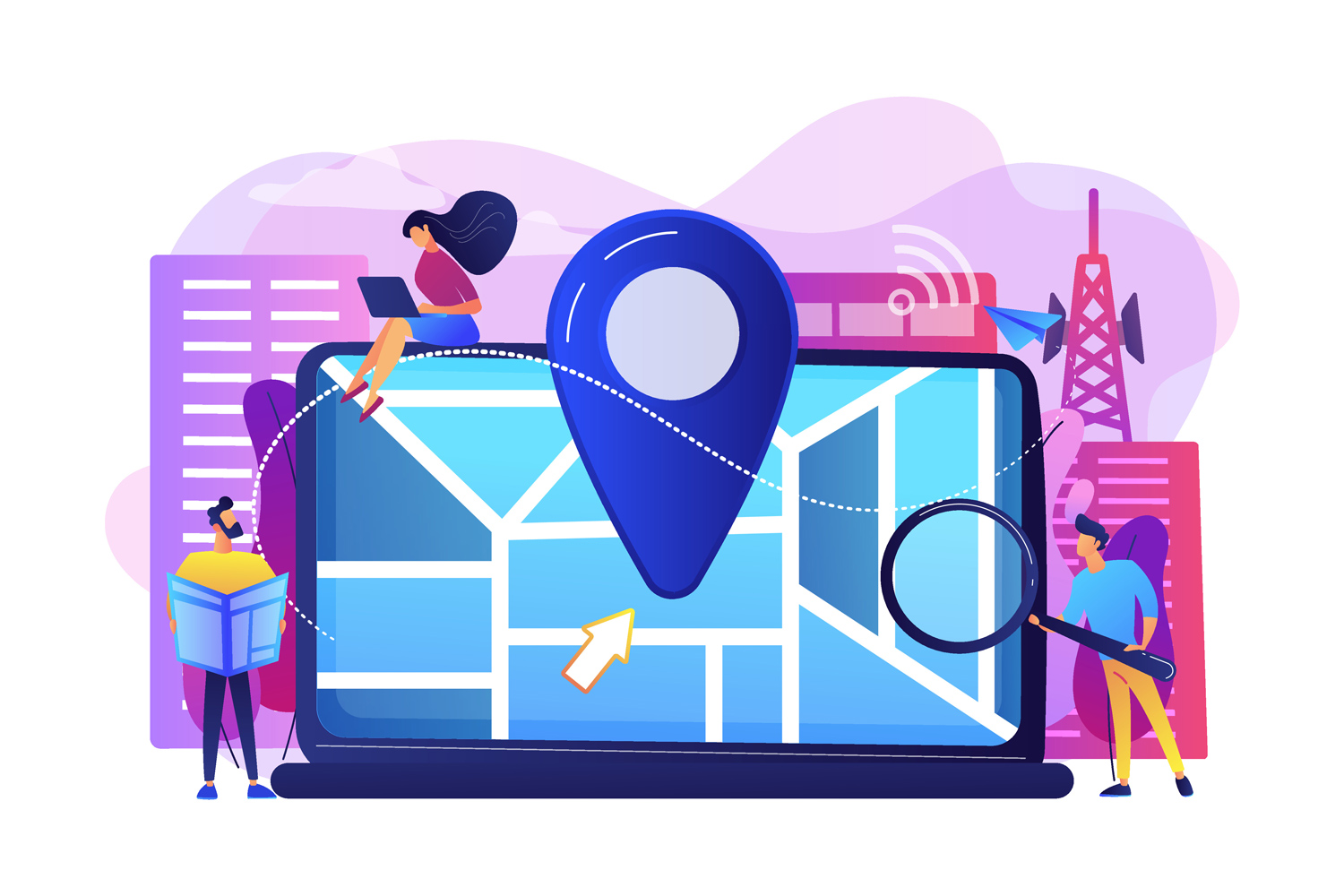
07 Nov Local SEO for Photographers [Case Study]
Ranking for local keywords in Google search results can be a big part of a photographers marketing plan. But while a photographer might put it in their plan, many don’t actually know how to go about getting their website to rank. There are lots of things that you can do to help your local search engine optimization rankings go up. Getting set up on Google’s My Business is a good start if you have premises because it’ll put you on the Google map. And getting backlinks from local businesses and business directories is another. But local SEO for photographers is the key to capturing the attention of people searching for photography services in your local area.
I didn’t want this to just be a page of advice with no real-world examples. So I set up a new page on my website to act as a case study for the advice I’m going to give you. I’ve wanted to offer my personal branding photography services more formally for a while now (I’ve been doing them but by word of mouth referral rather than my website) so this is a really good way to demonstrate the ideas behind local SEO.
What is local SEO for photographers?
Local SEO is the practice of optimising your website to attract more potential customers from local searches. So for example, I am a photographer based in Oxfordshire, so I might want to capture people searching for “portrait photography in Oxfordshire” or “pet photography in Banbury.” Realistically, very few people are going to pay me to shoot their portrait or their wedding if I’m a thousand miles away. Especially if I’m relatively new to the world of photography and without an established reputation.
By adding content to your website based around the local search terms that you want to rank for you can begin to let Google know that you serve people in this area and that you want them to look at your website. Google has no idea how good your images are or that you offer great customer service, all it knows is the words that you write on your page (and some additional data that you might give it).
So with that in mind, it’s important to start creating content that Google will believe is relevant for the searches that you think your potential customers are going to make.
Start with the basics
Identify the first search phrase that you want to rank for. I’m starting out with “personal branding photography in Oxfordshire.” Remember that this is a starting point and you’ll evolve your website and SEO in time as you respond to what works. I created a brand new page on my WordPress website with a couple of photos and some copy about what personal branding is and what services I offer as a photographer. I made sure to throw in some locational keywords near where I’m based so that I can also begin to capture local traffic from nearby counties as well.
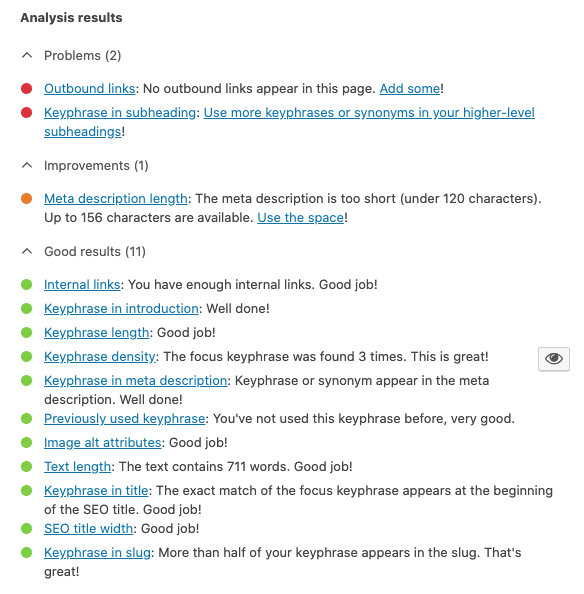
After writing some basic copy and adding a few pictures I reviewed my SEO results from the Yoast plugin that I use. If you have a website that runs on WordPress and you aren’t using Yoast SEO then you need to get that installed right away. This is the WordPress plugin that I cannot live without, and best of all, it has a free version that works totally fine for most people.
It lives under the box where you write your blog post on WordPress. All you have to do is enter your keyword phrase that you want to rank for, and I’ll anlyse your post and tell you what else you should do in order to improve your chances with Google.
Here’s the result of the first pass of my post and what Yoast SEO makes of it – it’ll do for now!
Analyse your post in SEMrush
SEMrush is a great tool for anyone who wants to take their online marketing seriously. It’ll tell you exactly what you need to do in order to rank higher in Google’s search results for your chosen keyword. It can also help you identify new keywords to try and rank for, and help you sort out which keywords are worth trying to rank for and which ones are just going to be too difficult. If you’re a complete beginner to SEMrush head over to my blog post about getting started with it. If you’ve never usedSEMrush before, take a look now. When you sign up you get a seven-day free trial to decide if you like it or not.

Once you’re inside SEMrush and you’ve created your project as I detail in my blog post above, find the “On Page SEO Checker”. This is where you can start to get real feedback on the page that you’ve just created and begin fine-tuning the SEO to capture more and more local searches. And hopefully, in time this will turn into more and more local clients!
In the top left-hand corner click the green button labelled “Import keywords and pages” and select “manually” from the drop-down menu. This is where you can add the new page that you’ve just created, and the keyword that you’d like it to rank for.
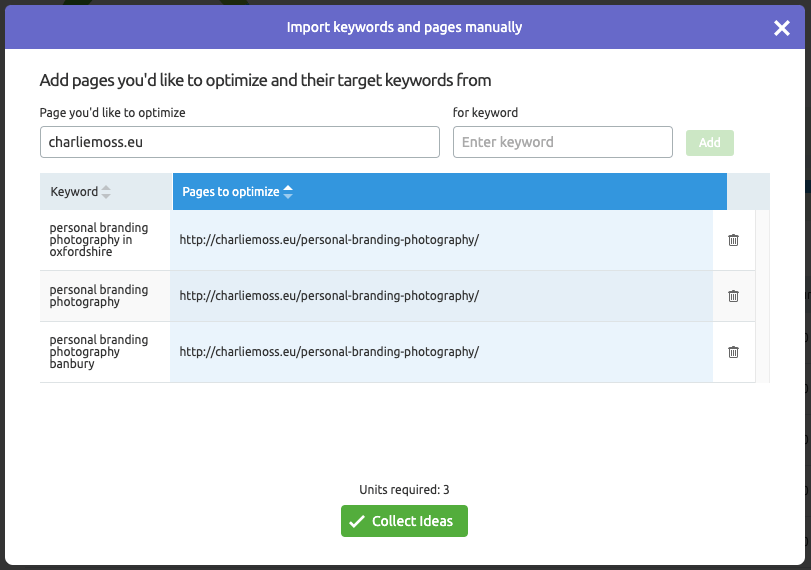
I added three variations to my keywords that I’d like to optimise, and there’s no reason why I shouldn’t get this page to rank for all three keyword phrases that I’ve detailed here. Once the report has run, you should be able to “View all pages & ideas” at the bottom of the page, where you’ll be able to find the pages and keyword phrases that you just entered.
My report shows me that I need to focus on creating more informative content and make my text content more readable. These are both reasonable things to suggest. The page is quite short and it was only a first draft so it does need improvement with the phrasing.
But the most interesting page of suggestions is found by clicking through to the “Semantic” report. This will show you related keywords and phrases that are cropping up on your top ten competitors pages. If you can find a way to get some of these into the page that you’ve just written, you’ll be competing across a wider variety of search terms, and ultimately that means you’ll be capturing more local search traffic.

The list above shows you what SEMrush says I need to think about including on my page. Who knew that there was such a demand for yoga photography? Although actually, I think I know five Oxfordshire yoga teachers personally and we have a yoga studio in town, so maybe it’s not such a bad idea to include this in the keyword phrases for my page!
I can see that I missed out some really obvious keyword phrases. business owners, initial consultation, branding photography session, photo shoot, Banbury Oxfordshire, and website and social media all need to find their way onto my new website page about personal branding photography. So the first job is to update the text that I initially wrote and add in paragraphs about these different elements.
Rinse and repeat
Don’t forget that you can rerun these reports after you’ve made some initial changes. In fact, you can keep rerunning the reports time and time again to ensure that your competitors aren’t getting an advantage over you with their copy. Each time you make changes and then rerun the report it’ll suggest different keyword phrases that you might want to incorporate into your website in order to capture the search habits of your ideal clients.
Do more local keyword research
There are two main ways to do local keyword research to improve your SEO rankings. The first is to think about which keywords people are using to find local photographers in your area, the second is to work out which keywords your competitors are ranking for (and then swipe their positions in Google searches). Both of these types of research can be done in SEMrush, so let me show you how.
Keyword gap research
This is one of my favourite tools in SEMrush. It allows you to compare the keywords between your site and that of a known competitor which is really helpful when it comes to local SEO for photographers. Once the report has run it’ll give you a list of keywords that your competitor is ranking for in Google’s search results, but that you do not. It’s quite simple to use as well – just enter your website and your competitors’ website in the Keyword Gap page and ask SEMrush to compare the two sites.
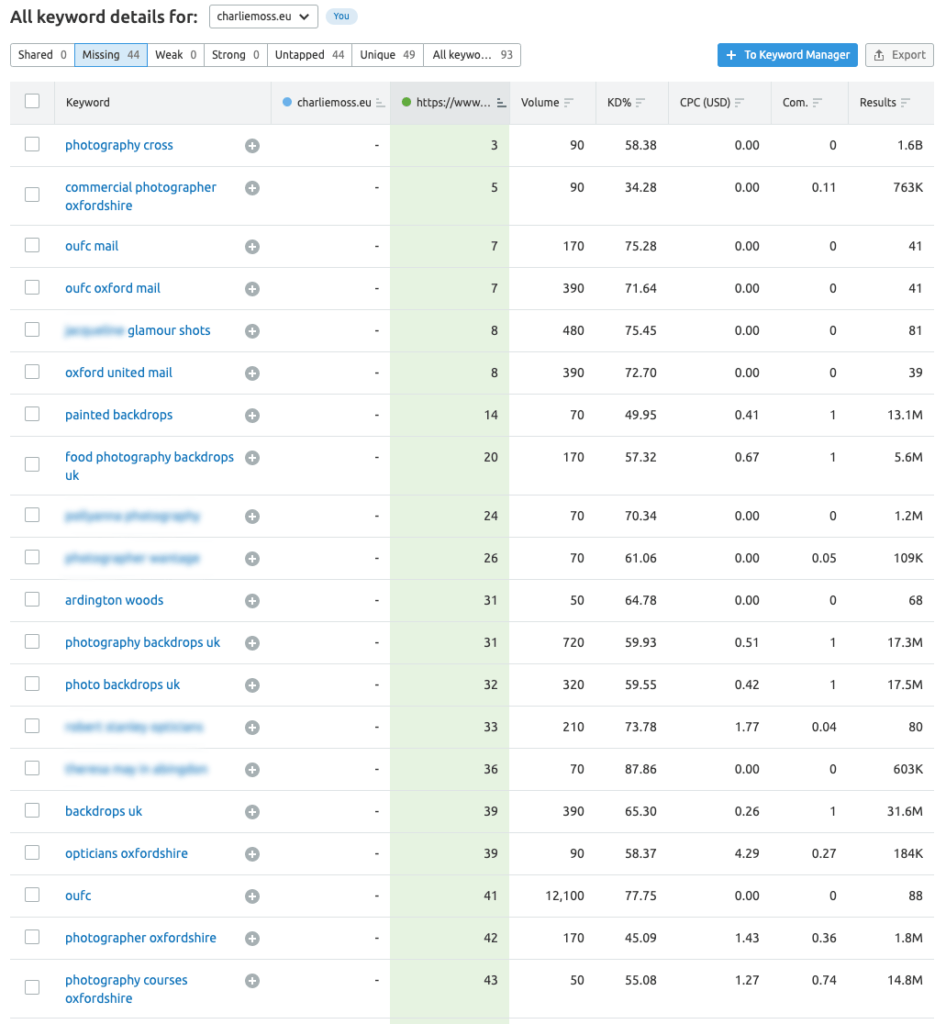
Now I have blurred out some of the search terms because I don’t think it’s fair to spread the SEO info of my competitors all over my blog. It seems like a professional privacy invasion too far! However, you can see that there are a whole load of search terms that I might want to consider trying to rank for with my page.
Terms like oufc (Oxford United Football Club) and Oxford Mail are great local businesses that I could somehow think about incorporating to my site which would give me more “local juice” for Google to read. If I’m writing about established local businesses, then Google will know I’m operating in this local area.
But the more interesting ones to me are things like “commercial photographer Oxfordshire,” “photographer Oxfordshire,” and “photography courses Oxfordshire.” All of these are things that people are looking for and might consider me a relevant local search result. Certainly, a photography course is something that I’ve been looking to put together at some point, so at least I know people are searching for it.
The numbers in the green column are where my competitor is ranking for that search phrase in Google’s GB search results. Anything off the first page is rarely clicked on, and ideally, you want to be appearing in the top three listings returned for a Google search.
Keyword overview research
You can dive deeper into the research, clicking on the search term in order to bring up an overview page telling you more about it. Let’s take a look at that “commercial photographer Oxfordshire” keyword phrase.
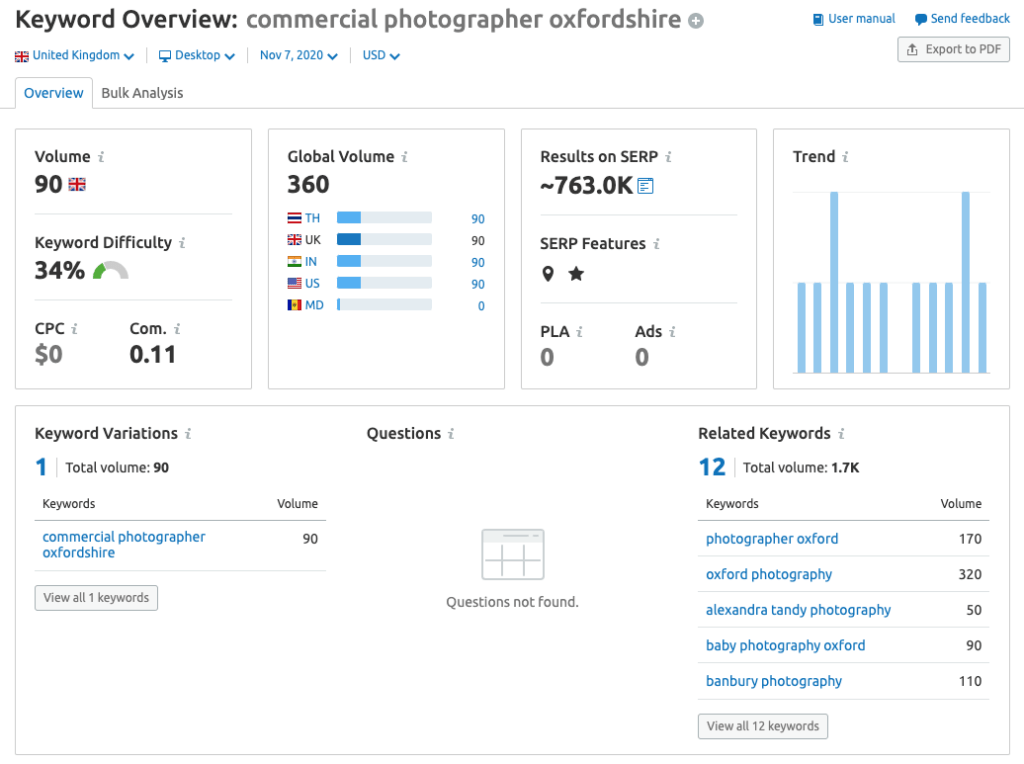
So here’s what we learned about this keyword:
- On average, 90 searches a month are being made for the phrase “commercial photographer Oxfordshire.” That might not seem like very much, but if you could get all 90 of those people searching to click on your website, then that would be three enquiries a day! For sure you wouldn’t be able to convert all of them to be paying customers, but all of these people are looking for commercial photography in Oxfordshire so it’s a great start.
- It has a keyword difficulty ranking of 34%. The higher the percentage the harder it will be for a new website to rank for this keyword. 34% isn’t impossible, but it’s also not going to be easy. It’ll take some work to get there other than pure SEO optimisation on your site. You’ll also want to think about how you’re going to get relevant backlinks for instance.
- The CPC is $0 on average. That means that very few if any, photographers are paying Google to rank for this keyword. So you could think about paying for some advertising in order to shoot you to the top of the search results in the short term while working on your SEO and backlink strategy in the long term.
There are two SERP features available. SERP means Search Engine Results Pages and it’s shorthand for a collection of features that you can rank for. For instance, on my post about diversifying your photography income, I not only rank top for a keyword phrase, but I also have the “featured snippet” on the Google results page because my page is considered to answer a lot of questions related to that search. This search for “commercial photographer Oxfordshire” has a location-based map feature available, and reviews available as extra bonuses to rank for. Not all search terms have all SERP features available, but if they’re there then you want to try and rank for them. SEMrush has tools that can help you try to rank for these features. It’s a really helpful set of tools to get on top of local SEO for photographers.
There are 12 related keywords that I might want to rank for. Clicking this box takes you to SEMrush’s “Keyword Magic” tool where you can start to explore these related keywords in more depth. While terms like “baby photographer Oxfordshire” aren’t relevant to my business, I really should be ranking for both “photographer Oxford” and “Oxford photography.”
This exploration of other keywords have given me ideas for other pages that I might like to create, so I can now set aside time in the coming weeks to work on these new topics in a similar way. In time, and with work, my photography website can rank for many more keyword phrases than it currently does which will help to drive potential clients to my small business.
Keep refining and improving
The key to getting great local SEO is to keep using tools like SEMrush to refine and improve your website. It won’t happen overnight, and it’ll take a few weeks for Google to actually pick up your new pages and their keywords. SEO results do take time to grow. Most SEO experts will tell you that it’ll take around 4 to 6 months to start seeing good results. And these results should improve over time – the results you see after twelve months will be better than the results you see after six months. It’s a gradual process of improvement and change so you need to be in it for the long haul.
Ideally, you should set aside a little time regularly (ideally each week, but if not then perhaps once a month) to work on your SEO and improve your rankings. And while improving your SEO rankings you’ll be building more content for your site that will serve your customer well. Focus on building informative webpages that answer questions your ideal customer has about your business. The most successful SEO strategies focus on people as much as search engine mechanics.
I’m hopeful that in another few months I’ll be able to come back to this post and tell you how my local SEO strategy has worked, and provide a great template for local SEO for photographers. But for now, you’ll just have to try the strategy I’ve written about here for yourself, and let me know how you get on in the comments!
Results
Week 1
- Added Personal Branding Photography page
- Improved visibility by 4.99%
Week 2
- Keyword “personal branding oxfordshire” moved to position 5 in Google search results.
- Keyword “personal branding photography in oxfordshire” moved to position 4 in Google search results.
Related Posts
AFFILIATE DISCLOSURE
I may earn commissions for any links that appear in blog posts on this site. There is no change in pricing if you click through an affiliate link.




